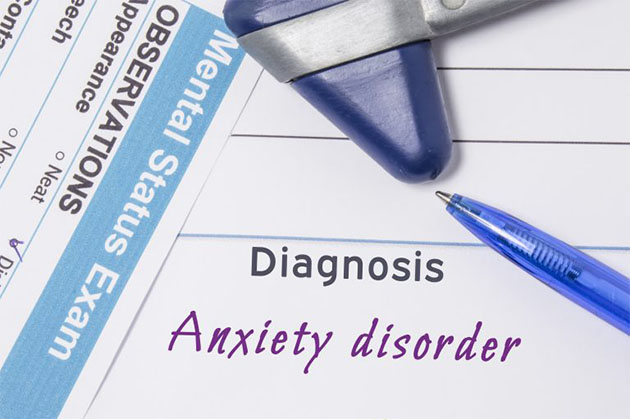Researchers have studied detailed effects of ‘pessimistic thinking’ which occurs in ansia e depressione
Ne soffrono più di 300 milioni e 260 milioni di persone nel mondo Depressione ed ansia respectively. Many times, a person suffers from both these conditions. Psychiatric problems like depression and ansia are devastating for patients and their families and they are extremely difficult to treat. Patients suffering from these neuropsychiatric disorders tend to experience a range of negative emotions and moods which makes them more pessimistic thereby making them focus more on the downside of any given situation. A specific personalised treatment can generally help patients alleviate some of the symptoms of these disorders. A type of psychotherapy – cognitive-behaviour therapy – is useful in curbing negative thoughts and emotions. Interpersonal therapy is also routinely used for better outcome for patients. Medications are also advised along with psychotherapy and sometimes interpersonal therapy.
Understanding the effects of depression and ansia disturbi
In uno studio pubblicato Neuron scientists have studied how emotions are controlled by our brain. The main goal of researchers was to investigate if they could reproduce the effect on brain which happens to people suffering with depression, ansia or other similar disorders. These patients have a highly negative thinking and they tend to place more weight on negative aspects and outcomes of any particular situation.
The group of researchers from MIT pinpointed a region in the brain which is linked to emotional decision making and is responsible for generating pessimistic moods. This region is called ‘caudate nucleus’ and when it is stimulated it leads to generation of negative moods and /or decisions. This study has been conducted in animals for now. The animal was seen to focus more on the negative drawbacks of situations and not on the benefits whenever this region was stimulated in their brain. This pessimistic decision-making continued for at least 24 hours after the first stimulation was performed. The same group of researchers had previously identified a neural circuit which is crucial for a type of decision making which is called as ‘approach-avoidance conflict’. Making such choices requires a person to weigh the positive as well as negative aspects of a situation and this involves high levels of ansia and sometimes stress. This stress obviously then affects the decision-making process. Therefore, animals got influenced and they then chose a high-risk option under stress anticipating better payoffs.
Per fare le convalide, i ricercatori hanno offerto agli animali una ricompensa (succo) insieme a uno stimolo ostile (un grande sbuffo d'aria sul viso) e poi hanno stimolato il loro nucleo caudato con una corrente elettrica minore. In ogni prova è stata usata una proporzione diversa per premio e dolore per giudicare se gli animali accetteranno o rifiuteranno. Questo è un esempio di processo decisionale che richiede un'analisi dei costi e dei benefici. È stato interessante vedere che ad ogni stimolazione, quando il rapporto costo-beneficio diventava distorto, cioè più costi e meno benefici, gli animali iniziavano a rifiutare le combinazioni che avevano precedentemente accettato. Questo è continuato fino a 24 ore dopo la stimolazione. Ciò ha comunicato che gli animali hanno iniziato a svalutare la ricompensa che desideravano in precedenza e la loro attenzione si è spostata maggiormente verso la parte di costo. Inoltre, in base alla loro accettazione o rifiuto, la loro attività cerebrale nel nucleo caudato cambiava ogni volta che si verificava un cambiamento nel modello del loro processo decisionale. Pertanto, questo cambiamento nella "frequenza beta" può servire come biomarcatore per vedere se gli animali risponderanno a particolari farmaci.
Regolazione dell'umore
Researchers explained that some regions in the caudate nucleus are connected with the limbic system which is known to control a person’s mood. This system directs input to motor areas of the brain as well as the dopamine-producing regions. The authors concluded that maybe caudate nucleus was disrupting this dopamine activity. Therefore, even a slight change in our system could mean rapid change our behaviour. The findings in this study could help us understand depression and ansia in detail which can then assist us to develop new effective ways of therapy.
***
{Puoi leggere il documento di ricerca originale facendo clic sul collegamento DOI indicato di seguito nell'elenco delle fonti citate}
Fonte (s)
Amemori K et al 2018. La microstimolazione striatale induce un processo decisionale negativo persistente e ripetitivo previsto dall'oscillazione della banda beta striatale. Neuron. https://doi.org/10.1016/j.neuron.2018.07.022
***






































